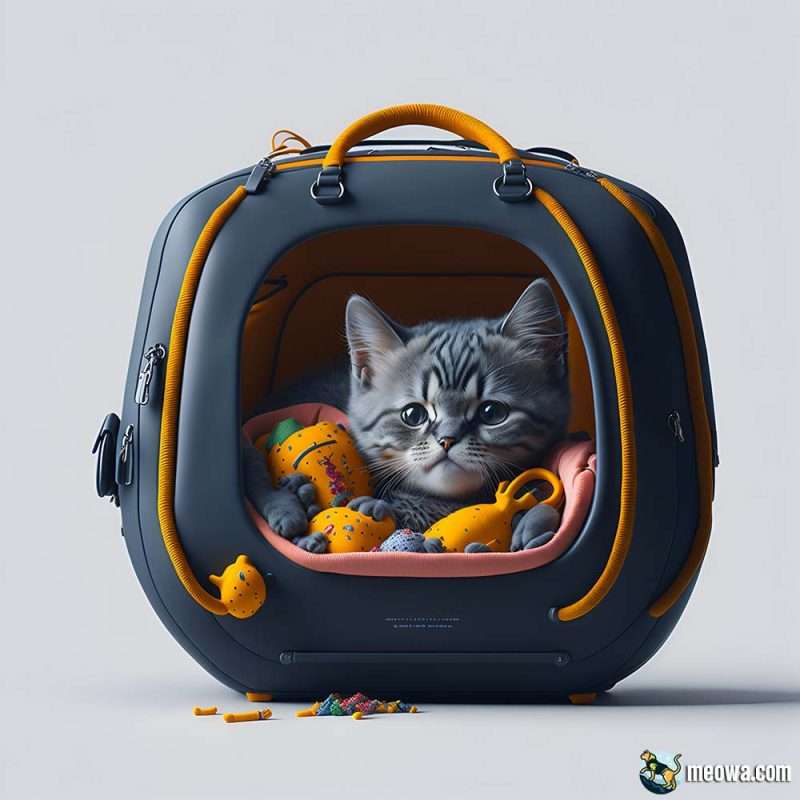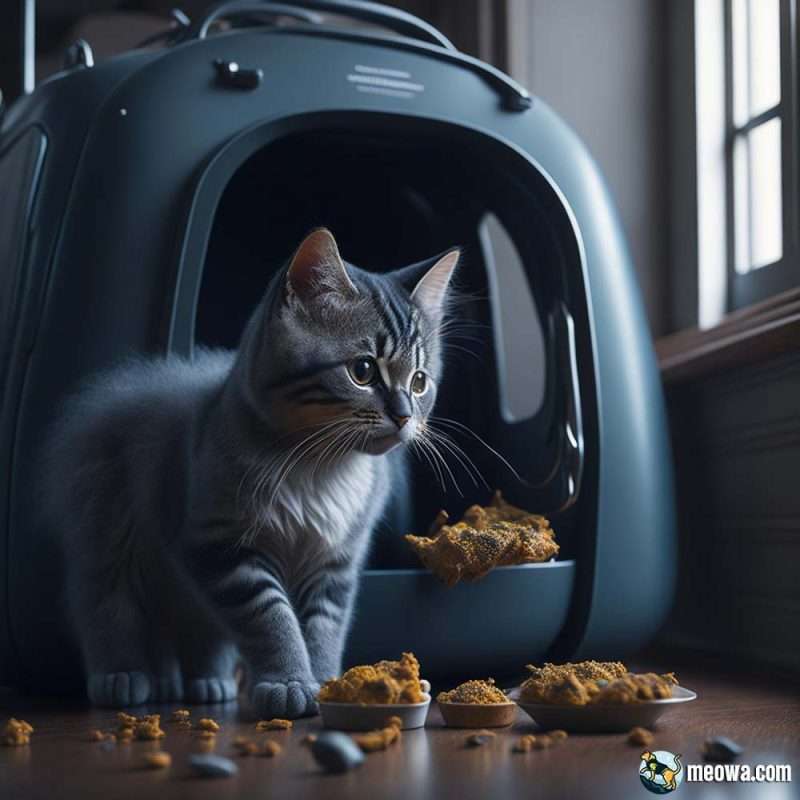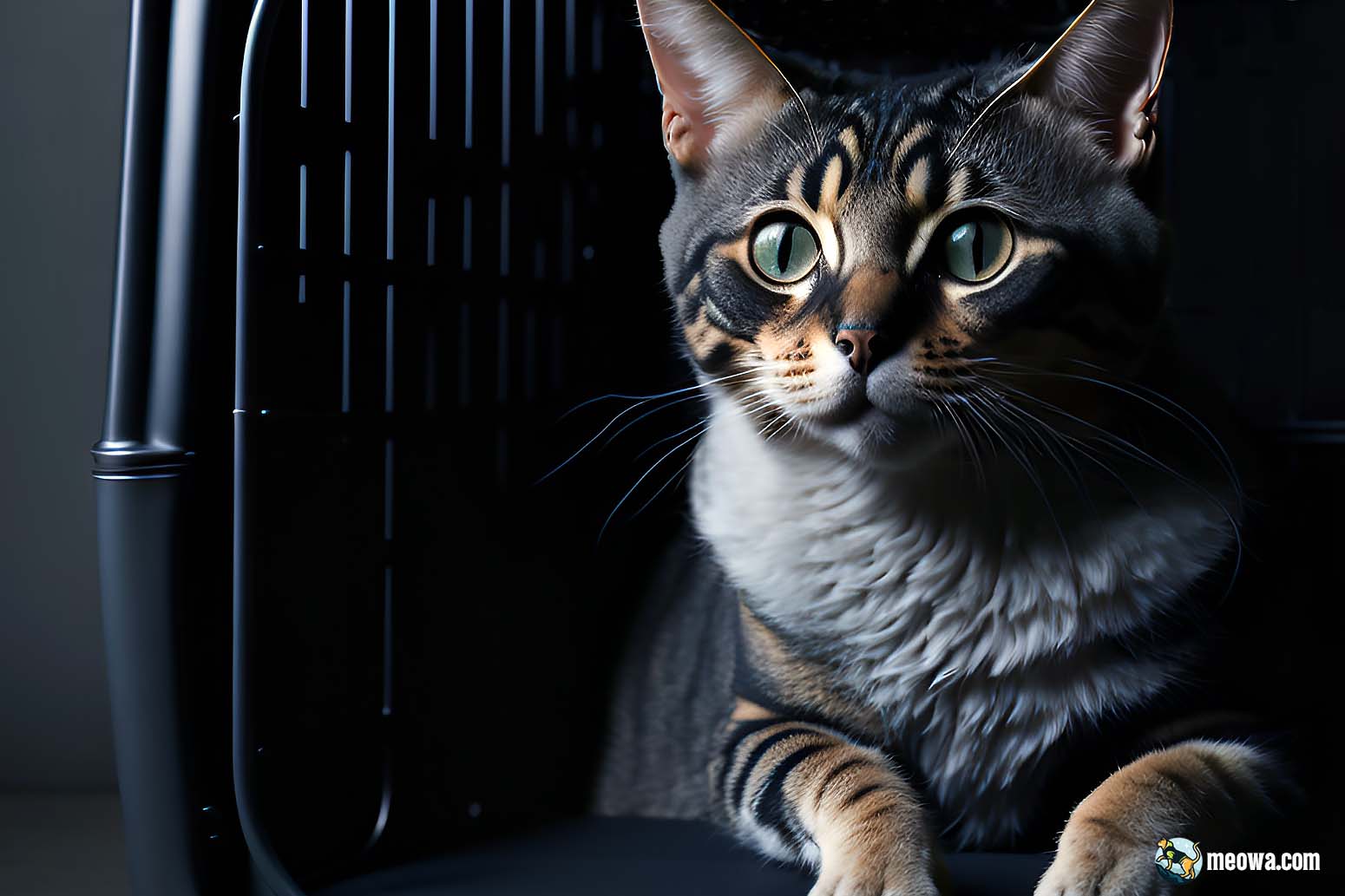How to Get a Cat in a Carrier? Stress-Free Methods & Pro Advice
Let’s face it: getting a cat into a carrier can feel like you’re trying to solve a complex puzzle while wearing oven mitts. It’s an art, a science, and a test of patience all rolled into one. In this article, we’ll guide you through the process of getting your cat into a carrier with minimal fuss, using different techniques, and addressing various concerns that might arise. You’ll also find helpful tips for making the carrier a safe and comforting space for your cat.
How to Get a Cat in a Carrier?
To successfully get your cat into a carrier:
- Make the carrier a snug, comfortable retreat
- Position it in an area where your cat frequently spends time
- Reward your cat with treats for positive reinforcement
- Gradually get the cat used to the carrier’s enclosure
- Apply techniques like head-first or bottom-first for smooth entry
Now, let’s explore more detailed strategies and methods to make this process even smoother for you and your feline friend. To set the foundation for success, we’ll begin with the essential first step: picking the Purr-fect Carrier!
Choosing the Right Carrier
Selecting the appropriate carrier is crucial for a positive experience for both you and your cat. To help you make an informed decision, let’s explore the different types of carriers, their pros and cons, and the importance of carrier size.
Types of Carriers
- Hard carriers: Made from durable materials like plastic or metal, hard carriers provide a sturdy and secure environment for your cat. They usually have a front-opening door and ventilation holes on the sides. Some models even have a top-opening hatch, which can make it easier to get a stubborn cat inside.
- Soft carriers: Typically made from fabric materials, soft carriers are lightweight and foldable, making them easier to store when not in use. They often have mesh windows for ventilation and visibility, as well as multiple openings, making it easier to get your cat in and out. However, soft carriers may not be suitable for larger or more aggressive cats, who might claw or chew through the material.
- Backpack carriers: These carriers are designed to be worn on your back, providing a hands-free carrying experience. They often feature padded straps for your comfort and mesh windows for your cat’s visibility and ventilation. Backpack carriers are ideal for adventurous cat owners who enjoy hiking or long walks with their feline companions. Check out our guide on cat backpack carriers for more information on this type of carrier.
Importance of Carrier Size
Choosing the right size carrier is essential for your cat’s comfort and safety. A carrier that is too small may cause your cat to feel claustrophobic and stressed, while a carrier that is too large may not provide enough security and support, increasing the risk of injury during transport. To measure your cat for the perfect carrier, check out our helpful guide on how to measure your cat for a carrier.
Pros and Cons of Various Carrier Styles
Each carrier style has its advantages and disadvantages, depending on your specific needs and your cat’s preferences:
- Hard carriers are durable, secure, and easy to clean, making them suitable for long trips or visits to the vet. However, they can be bulky and difficult to store.
- Soft carriers are lightweight, portable, and easy to store, but they may not provide enough protection for larger or more aggressive cats.
- Backpack carriers offer a unique, hands-free carrying experience, allowing you to transport your cat comfortably during walks, hikes, vet visits, and even air travel. However, always check with the vet or airline regarding their specific carrier requirements before using a backpack carrier for such purposes.
| Carrier Type | Pros | Cons |
|---|---|---|
| Hard Carriers | Durable, secure, easy to clean, suitable for long trips and vet visits, generally airline-approved | Bulky, heavier than other carriers, difficult to store |
| Soft Carriers | Lightweight, portable, easy to store, comfortable for the cat, often easier to get the cat in and out | May not provide enough protection for larger or more aggressive cats, can be difficult to clean, may not be airline-approved |
| Backpack Carriers | Unique hands-free carrying experience, suitable for walks, hikes, and public transportation, allows for close contact with the cat | May not be comfortable for all cats, check with vet or airline for specific carrier requirements before using, can be less stable compared to other carriers |
For a more in-depth comparison, read our article on Cat Backpacks vs Carriers.
By understanding the different carrier options available and choosing the right one for your cat, you’re one step closer to a stress-free experience when it comes to getting your cat in a carrier.
Familiarizing Your Cat with the Carrier

To ensure a smooth and stress-free experience when it’s time to put your cat in the carrier, it’s essential to help them become familiar with it. Here are some strategies to make the carrier a comfortable and inviting space for your feline friend:
Making the Carrier a Safe Space
Cats love cozy hideouts, so transform the carrier into a welcoming den by adding soft blankets, towels, or even a small bed. Including familiar items like a favorite toy or a piece of your clothing with your scent can also make the carrier more appealing. Ensure that the carrier is clean and free of any lingering smells that might be off-putting to your cat.
Introducing the Carrier in a Social Area
Instead of hiding the carrier away, place it in an area where your cat spends a lot of time, such as the living room. This approach allows your cat to explore the carrier at their own pace, sniffing and investigating it without any pressure. Leave the door open so your cat can come and go as they please.
Using Treats and Positive Reinforcement
To create a positive association with the carrier, use treats or kibble as a reward when your cat shows interest in it. Place the treats near the carrier at first, gradually moving them inside as your cat becomes more comfortable. Remember to praise your cat for their bravery and curiosity. Over time, your cat will associate the carrier with positive experiences and rewards.
Incorporating Playtime and Toys with the Carrier
Make the carrier an enjoyable space by incorporating playtime and toys. Place some of your cat’s favorite toys inside the carrier or use a feather wand or laser pointer to entice them to explore the carrier during play sessions. This strategy helps your cat view the carrier as a fun and entertaining place rather than something to be feared.
“Why cats hate the carrier? Because every time they get into the carrier they’re going to a place where they don’t want to go”
– Jackson Galaxy
By following these steps, you’ll help your cat become familiar with the carrier, making it easier to get them inside when the time comes.



How to Put Your Cat in a Carrier: Step-by-Step Guide
Once your cat is familiar with the carrier, it’s time to put them inside. Follow these steps to make the process as stress-free as possible for both you and your cat:
Acclimating Your Cat to the Carrier
Step 1: Turn the Carrier into a Cozy Hideout
To make the carrier cozy and inviting, place a soft blanket, towel, or bed inside. Consider adding an item that smells like you or your cat’s favorite toy. This step creates a sense of security for your cat, making them more likely to enter the carrier willingly.
Tip: You can also spray the carrier with a pheromone-based product designed to calm cats, such as Feliway.
Step 2: Place the Carrier in a Social Area
Position the carrier in an area where your cat spends time, like the living room or near their favorite sleeping spot. This allows your cat to explore the carrier in a familiar environment, reducing anxiety.
Tip: If possible, leave the carrier out for a few days before you need to use it. This gives your cat ample time to investigate and grow accustomed to it.
Step 3: Reward with Treats for Going Inside
When your cat enters the carrier, reward them with a treat or kibble. This positive reinforcement helps create a pleasant association with the carrier, making future attempts to put them inside easier.
Tip: Try using a treat your cat goes crazy for, like freeze-dried chicken or a bit of tuna. The more irresistible the treat, the more likely your cat will be to venture into the carrier.
Putting Your Cat in the Carrier
Step 4: Reattach and Close the Carrier Door
Once your cat is comfortable entering the carrier, reattach the lid and door. Continue rewarding them with treats when they go inside, and occasionally close the door for a short period before opening it again. This helps your cat get used to being inside the carrier with the door closed.
Tip: Start by closing the door for a few seconds and gradually increase the duration as your cat becomes more comfortable.
Step 5: Mentally Prepare Yourself and Your Cat
Before putting your cat in the carrier, take a few deep breaths and stay calm. Cats can pick up on our emotions, so it’s essential to remain relaxed and positive. Speak to your cat in a gentle, soothing voice to reassure them throughout the process.
Tip: Prepare a few treats or a toy beforehand to keep your cat distracted and focused on something positive during the process.
Step 6: Securely Place Your Cat into the Carrier
There are a few techniques you can use to place your cat in the carrier:
Head-first
Hold your cat securely, with one hand supporting their chest and the other under their hindquarters. Gently lower your cat into the carrier head-first, allowing them to explore and settle down. Close the door, and don’t forget to offer a treat as a reward.
Bottom-first
Position the carrier vertically with the door open, supporting your cat with one hand under their chest and the other under their hindquarters. Lower your cat into the carrier bottom-first, so their back legs enter first. This method can be especially useful for cats that resist being placed head-first.
Tip: Practice patience and remain calm during this process. If your cat becomes agitated or stressed, take a break and try again later.
By following these steps, you can put your cat in a carrier with minimal stress and anxiety, ensuring a more enjoyable experience for both you and your feline friend.
Alternative Methods for Difficult Cats
Sometimes, despite our best efforts, cats can be particularly stubborn or anxious about entering a carrier. In these situations, it’s essential to consider alternative methods to ensure a safe and stress-free experience for you and your cat.
Getting a Stubborn, Scared, or Aggressive Cat into a Carrier
For particularly difficult cats, try the following techniques:
- Burrito Wrap: Wrap your cat in a towel, leaving their head exposed. The towel can help calm your cat and protect you from scratches or bites. Once wrapped, gently place your cat in the carrier and remove the towel once they’re inside.
- Two-Person Technique: Enlist the help of a friend or family member. One person holds the cat by the scruff of their neck while supporting their body, and the other person gently eases the cat into the carrier.
- Pillowcase Method: Place your cat in a sturdy pillowcase, then gently slide the pillowcase (with your cat inside) into the carrier. This method can be especially useful for cats that resist other techniques.
Tip: Always approach your cat calmly and gently, using a soothing voice to reassure them.
Handling Cats with Arthritis or Other Special Needs
If your cat has arthritis or other mobility issues, take extra care to avoid causing discomfort when placing them in the carrier. Consider using a carrier with a top-loading door, which allows you to lower your cat into the carrier gently. You can also place an orthopedic bed or a cushioned mat inside the carrier to provide additional comfort and support.
Transporting a Cat Without a Carrier
In an emergency or if you find yourself without a carrier, you can transport your cat using one of the following methods:
- A sturdy cardboard box: Make sure the box has enough ventilation and is secure so your cat cannot escape.
- A laundry basket: Place a towel or blanket on the bottom for comfort and cover the top with a sheet or towel to prevent your cat from jumping out.
- An escape-proof cat harness: Use a well-fitted harness with a leash to keep your cat secure and under control while still allowing them some freedom of movement.
Looking for an escape-proof cat harness? Our escape-proof cat harness guide will help you choose the right one and ensure a secure, comfortable fit for your feline friend. Don’t miss out on these essential tips!
Tip: These methods should only be used as a last resort and for short distances, as they may not provide adequate safety and security for your cat during travel.
Using Pheromone Sprays or Calming Supplements
Some cats may benefit from pheromone sprays or calming supplements, such as Feliway or Zylkene. These products can help reduce anxiety and stress, making it easier for your cat to enter the carrier. Always follow the manufacturer’s instructions and consult your veterinarian before using any supplements.
Remember, patience and persistence are key when working with difficult cats. By understanding your cat’s unique needs and trying different techniques, you can help make the process of getting your cat in a carrier as stress-free as possible.
Cat Carrier Safety Tips
Ensuring your cat’s safety and comfort during travel is crucial. Here are some helpful tips to make the journey as smooth as possible.
How to Secure a Cat Carrier in a Car
Properly securing your cat carrier in your vehicle is essential for your cat’s safety. Follow these steps to keep the carrier stable and secure during car rides:
- Place the carrier on the floor of the car behind the front seats. This location provides the most stability and reduces the risk of the carrier sliding or falling during sudden stops.
- Use a seatbelt to secure the carrier. Many carriers come with built-in seatbelt slots or loops. Thread the seatbelt through the designated slot or loop and fasten it tightly.
- Keep the carrier level. Make sure the carrier sits flat and doesn’t tilt to one side, which can cause discomfort or stress for your cat.
Calming a Stressed Cat in a Carrier
Cats can become stressed or anxious during travel. Here are some ways to help your cat feel more at ease in their carrier:
- Cover the carrier with a lightweight blanket or towel. This can create a sense of security and block out potentially stressful stimuli, like traffic or unfamiliar sights and sounds.
- Play soothing music or white noise. Soft, calming sounds can help reduce anxiety and create a more relaxing environment.
- Use pheromone sprays or calming supplements, as mentioned earlier, to help ease your cat’s stress during travel.
Tip: Keep an eye on your cat’s body language and vocalizations. If your cat seems extremely stressed or unwell, consult with your veterinarian for advice.
Ensuring a Comfortable and Safe Trip to the Vet or Other Destinations
To make the trip as pleasant as possible for your cat, consider the following tips:
- Line the carrier with a soft towel or blanket. This provides extra comfort and can help absorb any accidents during travel.
- Bring familiar items. A favorite toy or a piece of clothing with your scent can provide comfort and reassurance for your cat.
- Maintain a comfortable temperature. Make sure the car’s interior is neither too hot nor too cold for your cat.
- Keep car rides short and direct. Plan your route ahead of time to minimize travel time and avoid unnecessary stops or detours.
Monitoring Your Cat’s Behavior and Health During Travel
Pay close attention to your cat’s behavior and health during travel. Look for signs of distress, such as excessive panting, drooling, or vocalizing. If your cat shows signs of illness or extreme distress, contact your veterinarian immediately for guidance.
By following these safety tips, you can ensure that your cat’s journey in the carrier is as comfortable and stress-free as possible.
Training Your Cat for Future Carrier Use
Creating positive associations and routines with the carrier can make future trips easier and less stressful for both you and your cat. Here are some tips on training your cat for carrier use.
Tips for Carrier Training
Discover how to carrier train a cat with our helpful tips, ensuring stress-free travels and a comfortable experience for your feline companion. Begin your training journey now!
- Start early: It’s best to begin carrier training when your cat is young and more adaptable to new experiences. However, adult cats can also be trained with patience and consistency.
- Make it positive: Use treats, praise, and affection to create positive associations with the carrier.
- Practice regularly: Integrate carrier training into your cat’s daily routine to reinforce the positive associations and help your cat feel more comfortable in the carrier.
Establishing Routines and Positive Associations with the Carrier
Establishing a routine with the carrier can make it a more familiar and comfortable experience for your cat. Here are some steps to help you create positive associations with the carrier:
- Place the carrier in a social area: As mentioned earlier, having the carrier in an area where your cat spends time can help it become a familiar and non-threatening object.
- Encourage exploration: Leave the carrier door open and allow your cat to explore it at their own pace. Offer treats, toys, or bedding inside the carrier to entice your cat to enter.
- Gradually close the door: As your cat becomes more comfortable inside the carrier, practice closing the door for short periods. Start with just a few seconds and gradually increase the duration, always providing treats and praise.
- Incorporate playtime: Make the carrier part of your cat’s playtime by tossing toys inside or placing treats on top of the carrier for your cat to retrieve.
Gradually Increasing the Duration of Time Spent in the Carrier
As your cat becomes more comfortable with the carrier, it’s important to gradually increase the time they spend inside. Follow these steps to help your cat adapt:
- Begin with short durations: Start with just a few seconds or minutes inside the carrier and gradually increase the time as your cat becomes more comfortable.
- Provide rewards: Offer treats and praise during and after each training session to reinforce the positive association with the carrier.
- Increase the challenge: Once your cat is comfortable with being in the carrier for extended periods, practice carrying them around the house, then progress to short car rides.
- Stay consistent: Maintain a consistent training schedule to help your cat become accustomed to the carrier and reduce anxiety during future trips.
By following these tips and training your cat to be comfortable with their carrier, you’ll make future trips to the vet or other destinations much easier and less stressful for both you and your cat.
Frequently Asked Questions
In this section, we’ll address some commonly asked questions about getting a cat into a carrier and ease concerns that cat owners may have.
How do you get a difficult cat into a carrier?
For difficult cats, try the following tips:
1. Use a top-loading carrier for easier access.
2. Wrap your cat in a towel to protect yourself and the cat, then gently place them in the carrier.
3. Place the carrier in a small room, so your cat has fewer places to hide.
4. Be patient and give your cat plenty of time to get used to the carrier.
Can you train a cat to go in a carrier?
Yes, you can train a cat to go in a carrier by creating positive associations, using treats, praise, and affection, and gradually increasing the time spent in the carrier. Establishing routines and incorporating playtime can also help.
How do you transport a cat that hates carriers?
For cats that hate carriers, you can try:
1. Using a different type of carrier, such as a soft-sided or backpack carrier.
2. Employing pheromone sprays or calming supplements to help reduce anxiety.
3. Covering the carrier with a blanket to make it feel more secure.
Why does my cat freak out in a carrier?
Cats may freak out in a carrier due to fear or anxiety caused by unfamiliarity or past negative experiences. Training your cat to become comfortable with the carrier and creating positive associations can help reduce anxiety.
Will my cat forgive me for putting her in a carrier?
Yes, cats are resilient and can forgive their owners for putting them in a carrier. It’s essential to create positive experiences with the carrier and provide treats, praise, and affection to reinforce the bond with your cat.
How do I get my aggressive cat to go to the vet?
For aggressive cats, follow these steps:
1. Use a towel or blanket to wrap your cat, which can help protect you from scratches and bites.
2. Gently place your wrapped cat into the carrier.
3. Consult with your veterinarian about possible anxiety-reducing medications or supplements.
Remember, patience and consistency are key when dealing with a difficult or aggressive cat. By following the tips and guidelines mentioned throughout this blog post, you can make the process of getting your cat into a carrier much easier and less stressful for both you and your furry friend.
Conclusion
In conclusion, getting a cat into a carrier doesn’t have to be a daunting task. With patience, understanding, and the right approach, you can help your feline friend feel comfortable and secure in their carrier.
Remember that every cat is unique, and their individual personalities and experiences will play a role in how they react to carriers. Be patient and compassionate with your feline friend during the process, and don’t forget to reward them with treats, praise, and affection to reinforce positive experiences.
As you continue to work with your cat and follow the tips and advice provided in this blog post, you’ll not only make the process of getting your cat into a carrier more manageable but also strengthen the bond between you and your furry companion.
Now that you’re equipped with the knowledge and techniques needed to get your cat into a carrier, it’s time to embark on new adventures with your feline friend. Don’t forget to check out more informative content on our blog.


